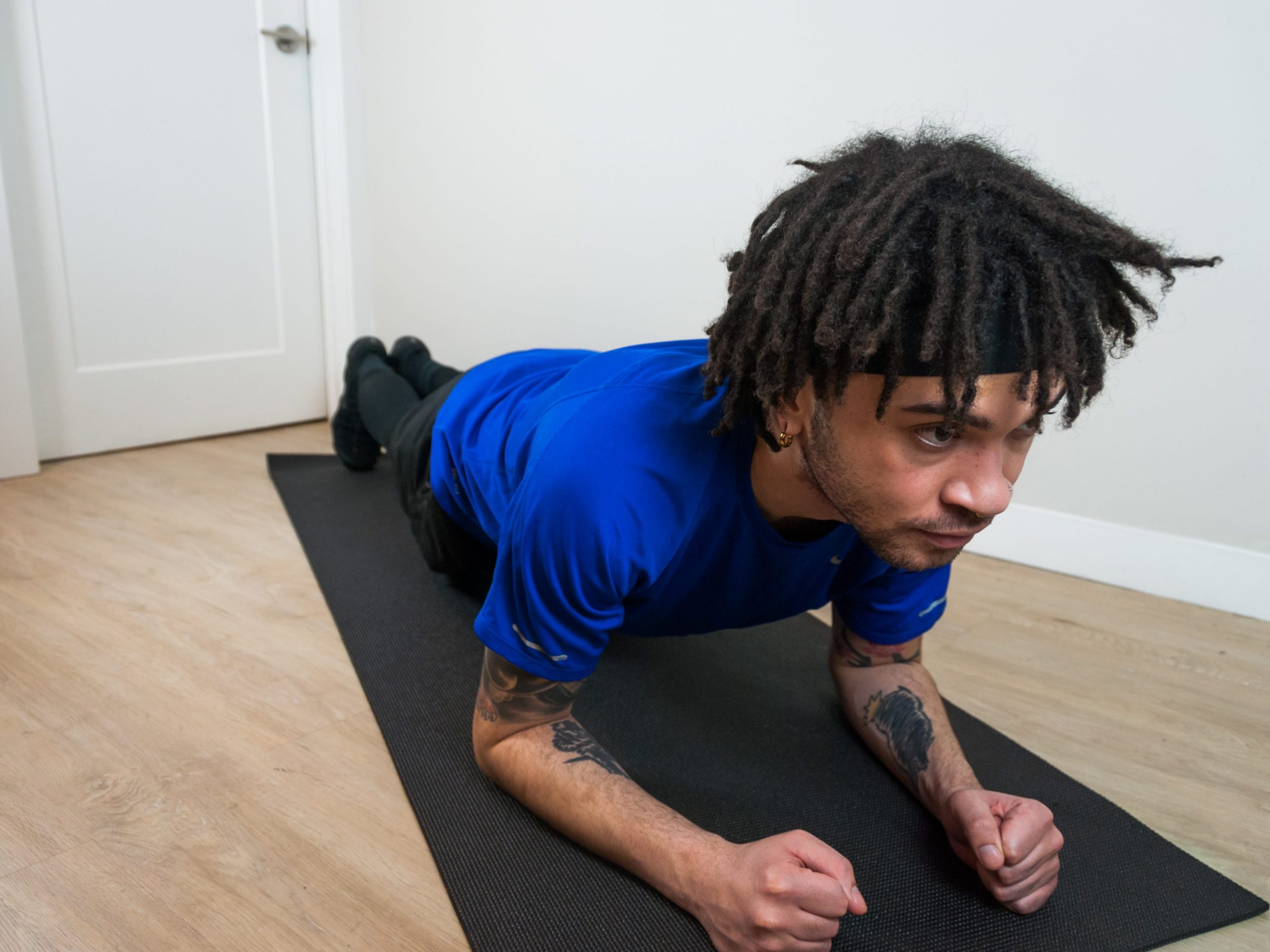- Isometric exercises, like planks, don’t require you to move or bend any joints.
- Isotonic exercises, like squats, involve straining the muscles while moving the joints and applying a constant amount of weight.
- Isokinetic exercises are performed at a consistent speed, which can be increased as you progress.
- This article was medically reviewed by Joey Thurman, CSCS, CPT, FNS, a Chicago-based fitness expert and MYX Fitness coach.
- Visit Insider’s homepage for more stories.
Most of us know that exercising is good for our health. But different types of exercise have different benefits for the body. Here’s what you need to know about the differences between isometric, isotonic, and isokinetic exercise.
Isometric Exercises
Isometric exercise is a type of low-impact exercise that involves straining your muscles without moving or bending your joints. A prime example is holding your body in a plank position – you stay at the top of a push up without bending your elbows.

Isometric exercises are good for maintaining your strength and stability. For instance, if you train by doing a plank pose, it can help you hold a plank position for an extended period of time, but won’t necessarily help you do more pushups. Isometric exercise is often recommended for people who are recovering from an injury, or who suffer from joint pain like arthritis. Evidence is growing that isometric exercise may help lower blood pressure as well.
"For years, we avoided [isometric exercise] in people with high blood pressure or heart disease," says Neil A. Smart, a professor of clinical exercise physiology at the University of New England. "But my work and others has recently shown clearly that isometrics is the best way to lower blood pressure with exercise."
In 2014, Smart and his colleagues published a review of 9 studies looking at isometric exercise and blood pressure. They found that both people with normal and high blood pressure who did isometric training lowered their systolic blood pressure by 7mm, which the researchers say could be enough to prevent an issue like a heart attack.
Isotonic Exercises
Isotonic exercise involves putting a constant amount of weight or tension on your muscles while moving your joints through a full range of motion.
An example is bench-pressing, as the amount of weight stays the same and your joints bend and straighten all the way. Squats are another form of isotonic exercise, using your body weight to tense the muscles and moving your knees through their full range of motion.

Isotonic exercise can help strengthen and build muscles so that you can move through all types of motion with greater ease. "This type of training is what most people do in the gym and has benefits for preserving strength as we age," says Smart.
Isotonic exercise is especially useful for people at risk of or diagnosed with diabetes, Smart says, as it can help improve blood sugar regulation. A large 2017 study found that women who did strength-training exercises had a 30 percent lower rate of diabetes, compared with women who didn't train.
Isotonic exercise can also help build up bone density, which can be beneficial for people at risk of, or with, osteoporosis, a condition where bone mass is depleted. Studies show that athletes who lift weights have higher bone mass and density, compared with other types of athletes.
Isokinetic Exercises
Isokinetic exercise is a type of workout that involves specialized machines and is not often used by the average person. "It is mostly used to train athletes to improve their running or throwing by improving the speed at which they can move their limb/body or a weight," Smart says.
The equipment used for isokinetic exercise, known as an isokinetic dynamometer, keeps your muscles moving at a consistent speed, which can then be raised with ongoing training.
This can help athletes like baseball pitchers or javelin throwers learn to use their maximum force at higher speeds, Smart says.
Isokinetic exercise can also be used to assess the muscle function of athletes or people with specific injuries.
How to remember the difference between isometric, isotonic, and isokinetic exercises
One way to remember the difference between isotonic, isometric, and isokinetic exercises is to look at the meaning of the original Greek roots of each word.
- Isometric means "same length," so that your muscles do not get longer or shorter by bending a joint.
- Isotonic means "same tension" so that the weight on your muscles stays the same.
- Isokinetic means "same speed" so that your muscles are contracting at the same speed throughout the workout.
So, if you are looking to build strength or heal from an injury, you may look to isometric or isotonic exercises, but most of us won't ever need to use isokinetic exercises.
